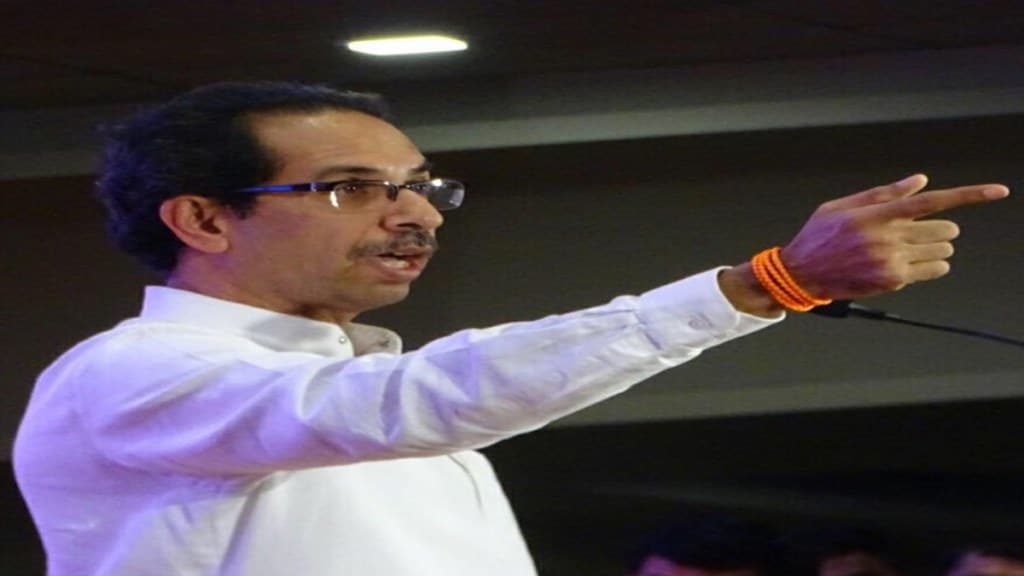The Supreme Court on Thursday said that the Maharashtra Governor erred in calling upon then Chief Minister Uddhav Thackeray to prove majority in the state Assembly on 30 June 2022.
A constitution bench said the governor was wrong in concluding that Thackeray had lost the majority in the House after the revolt, adding that floor test cannot be used as a medium to resolve inter or intra-party disputes.
The top court could have reinstated Thackeray had he not resigned as the Maharashtra chief minister following Eknath Shinde-led Shiv Sena MLAs’ rebellion, the five-judge bench headed by Chief Justice of India DY Chandrachud said.
It added that status quo ante cannot be restored since Thackeray resigned without facing a floor test.
In a unanimous verdict, on a batch of cross-petitions filed by Thackeray and Shinde camps with regard to the political crisis that led to the collapse of the Maha Vikas Aghadi (MVA) government following a revolt by the Eknath Shinde faction, the bench held that the house speaker’s decision to appoint Bharat Gogawale of the Shinde faction as the whip of Shiv Sena was “illegal”.
The bench, however, said since Thackeray had resigned without facing the floor test, the governor was justified in inviting Shinde to form government with the backing of the BJP which was the largest political party in the house.
But, how did a a rebellion within Shiv Sena end with Uddhav Thackeray’s resignation? Here’s a lowdown of the events that led to Thackeray’s exit.
A revolt ending with resignation
Embattled Thackeray announced his resignation as chief minister on 30 June last year, moments after the Supreme Court refused to stay a floor test ordered by the Governor to prove majority.
The top court had ruled that Thackeray must prove that his government still has a majority.
Announcing that he was quitting as chief minister as well as a member of the Maharashtra Legislative Council, Thackeray said in an online address, “We respect the Supreme Court judgment. Democracy must be followed.”
In the 15-minute public address, Thackeray said that all those who were his own have back stabbed him and those who were thought to betray him stayed with him. He thanked the Congress and NCP leaders for their cooperation and support.
“I don’t want to play these games. If those people who who were brought up by Sena chief (Balasaheb Thackeray) want to rejoice the fact that they pulled his son down then it is my mistake that I put my faith in them. I don’t want the blood of my Shiv Sainiks to spill on the streets and so I am stepping down from the CM’s post as well as that of an MLC,”said Thackeray.
What led to the crisis?
It all began on June 21, when Thackeray called an urgent meeting of all Shiv Sena MLAs after suspected cross-voting in Legislative Council elections.
Shiv Sena’s Chief Whip, Sunil Prabhu, even issued a stern letter, saying: “If you do not attend the meeting, it would be presumed that those who do attend the meeting you have a clear intention of leaving the party. Hence, there will be action taken against you based on the provisions for preventing anti-defection.”
Eknath Shinde stages coup
Shinde staged a coup on the same day and left Mumbai with about a dozen Shiv Sena MLAs for Surat in Gujarat. A day later, they flew to Guwahati after Thackeray’s representatives managed to meet with some of them.
After landing in Guwahati, Shinde claimed he had the support of 40 MLAs, more than the number required to back the anti-defection law.
The Eknath Shinde faction contended that they had more MLAs than Thackeray and his team, which was reduced to just about 15 MLAs, and their faction was the real Shiv Sena and that the party must leave the current government, which included the Congress and Sharad Pawar’s Nationalist Congress Party (NCP) as its allies, and re-enter its earlier partnership with the Bharatiya Janata Party (BJP).
It is worth noting that the MVA government was formed after the Shiv Sena and the BJP broke off their alliance after the 2019 Assembly elections, as the saffron party refused to agree on each sharing the chief minister’s post for two-and-a-half years.
After the MLAs, led by Shinde, turned against the chief minister, Thackeray sought court intervention in an attempt to buy time.
Two days after the revolt began, Thackeray, also moved out of the Chief Minister’s residence, in keeping with a promise he had made to the rebels in a Facebook live – that he was wedded to his party and not to power.
Apparently, he was ready to resign then itself, but was convinced against it by Pawar, who persuaded him to fight to the finish.
Devendra Fadnavis urges Governor for floor test
Meanwhile, BJP leader Devendra Fadnavis met Governor Bhagat Singh Koshyari and handed him a letter seeking a floor test in the state Assembly.
In the letter, Fadnavis urged the Governor to direct the MVA government to prove its majority in the Assembly.
“We have given a letter to the Governor, in which we have informed him that Shiv Sena’s 39 MLAs are saying that they are not with the Sena and they do not want to support the Maha Vikas Aghadi government,” Fadnavis told reporters after meeting the Governor.
Following the appeal by the BJP, Governor Bhagat Singh Koshyari issued directions to the government to prove its majority in the state Assembly on June 30.

